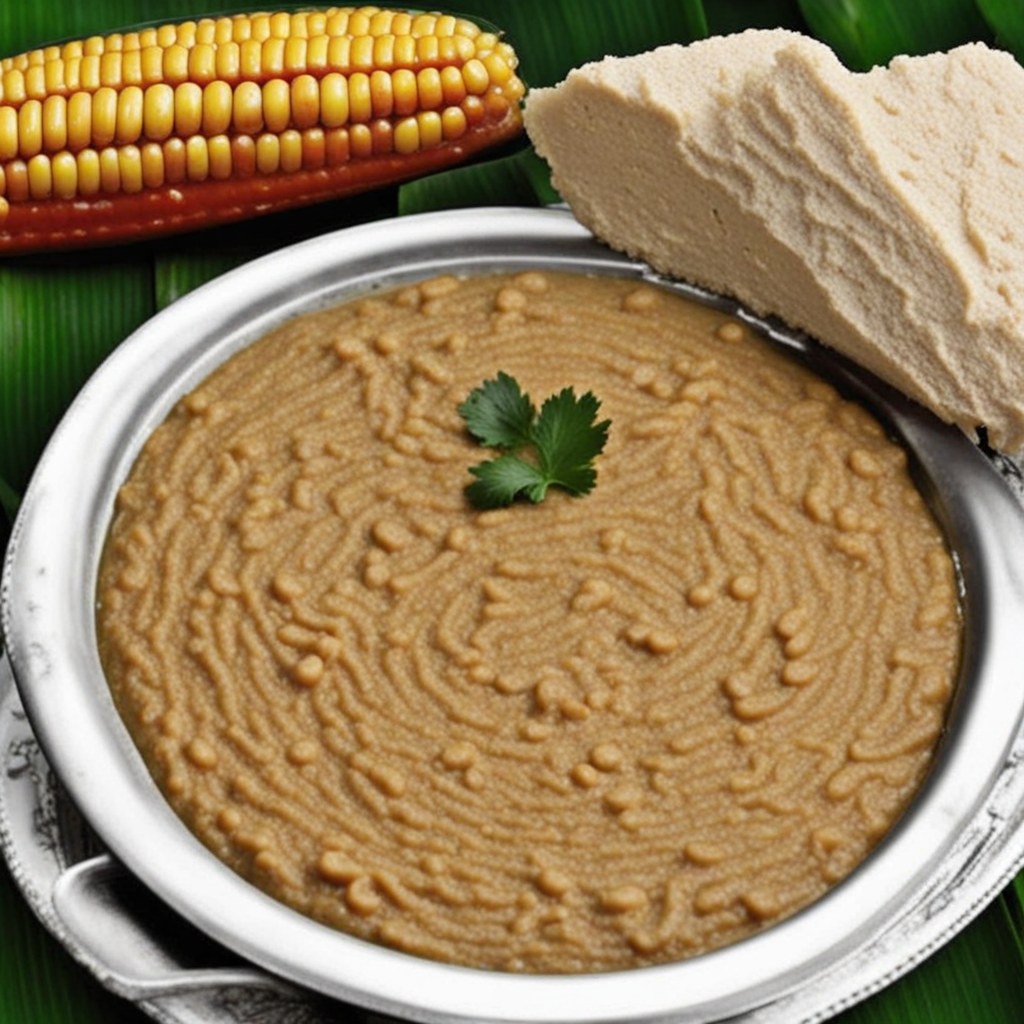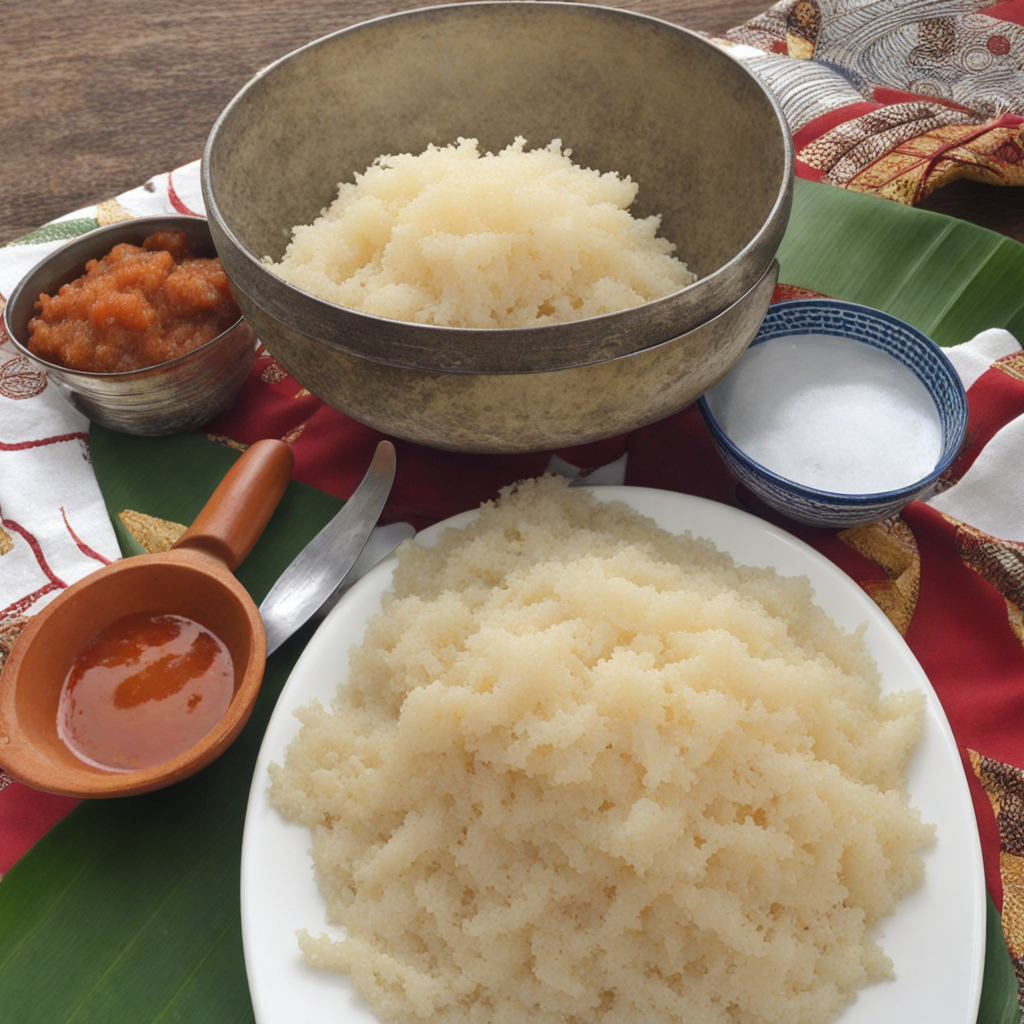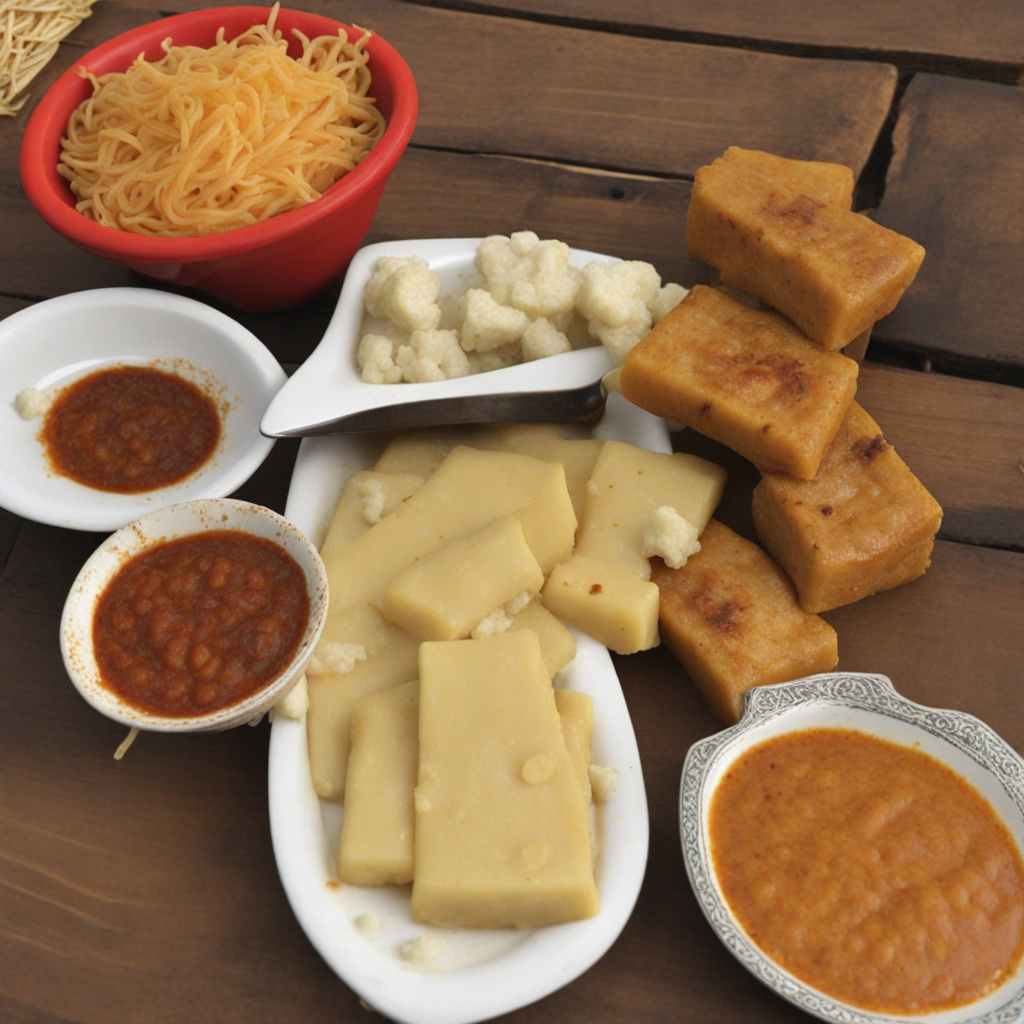Pate
Pâté, a beloved dish hailing from Benin, is a delightful fusion of flavors that showcases the country's rich culinary heritage. This dish typically consists of a smooth, creamy paste made from ground grains, often a combination of maize or cassava, and is seasoned with local spices that add a distinctive kick. The blend of textures is remarkable, as the pâté can be enjoyed warm or cold, making it a versatile choice for any meal, whether it's a hearty breakfast or a light snack. Accompanying the pâté are often vibrant sauces or spicy dips that elevate the taste experience. These accompaniments, made from fresh tomatoes, peppers, and herbs, bring a zesty freshness that complements the rich, earthy flavors of the pâté. The balance of heat and creaminess results in a mouthwatering dish that excites the palate and invites further exploration of the diverse flavors of Benin's cuisine. In addition to its delicious taste, pâté is also a dish steeped in cultural significance, often served during gatherings and festivities. It's common to find locals enjoying this dish at street food stalls, where it's freshly prepared and served with a generous side of vegetables. The experience of savoring pâté is not just about the food itself but also about the communal joy it brings, making it a must-try for anyone interested in discovering the unique tastes of Benin.
How It Became This Dish
The Culinary Journey of Pâté in Benin: A Rich Tapestry of Flavor and Culture Origins and Early Influences Pâté, a term that resonates with culinary sophistication, embodies a rich historical narrative that extends beyond the borders of France. In Benin, a small West African nation with a vibrant tapestry of cultures and traditions, pâté has evolved into a beloved dish that reflects the country's diverse heritage. The origins of pâté in Benin can be traced back to the indigenous culinary practices of the Fon and Yoruba people, who utilized locally sourced ingredients to create flavorful dishes. The historic trade routes that passed through Benin facilitated cultural exchanges between various ethnic groups and neighboring nations. The arrival of European colonizers during the 15th century introduced new ingredients and cooking techniques, which merged with local traditions to form the unique culinary landscape we see today. While French colonial influence is often associated with the term 'pâté', the essence of this dish in Benin is deeply rooted in its local context, showcasing a blend of indigenous flavors and French culinary techniques. Cultural Significance In Benin, pâté is more than just a dish; it is a symbol of hospitality and community. Traditionally served at gatherings, celebrations, and festivals, pâté embodies the spirit of sharing and togetherness. The preparation of pâté often involves family members gathering in the kitchen, each contributing their skills and expertise, reinforcing bonds and creating a sense of unity. Pâté in Benin is often made from a variety of meats, including chicken, beef, and sometimes fish, which are mixed with spices, herbs, and vegetables to create a rich, flavorful filling. The choice of ingredients often reflects the cultural preferences and availability of local produce, making each version of pâté unique to the region and the occasion. The dish is typically encased in a pastry shell or served as a spread, showcasing the versatility of its preparation. Pâté is not only a staple in everyday life but also holds a place of honor during significant events. It is commonly featured during weddings, religious ceremonies, and national holidays, symbolizing abundance and prosperity. The act of serving pâté to guests signifies respect and appreciation, making it an integral part of Beninese hospitality. Evolution and Development Over Time As Benin navigated through the challenges of colonialism and subsequent independence in 1960, its culinary practices also transformed. The evolution of pâté reflects the socio-political changes the country experienced. Post-independence, there was a resurgence of interest in traditional dishes, as people sought to reclaim their culinary heritage. This cultural renaissance led to a renewed appreciation for local ingredients and cooking methods. In contemporary Benin, pâté has adapted to modern tastes and lifestyles while maintaining its traditional roots. Urbanization and globalization have introduced new flavors and techniques, resulting in innovative variations of the dish. Chefs and home cooks alike have begun experimenting with alternative ingredients, incorporating local spices such as pimento, ginger, and garlic to enhance the flavor profile of pâté. Additionally, the use of plant-based ingredients has emerged as a response to the growing demand for vegetarian and vegan options, making pâté a more inclusive dish that caters to diverse dietary preferences. Street food culture has also played a significant role in the popularization of pâté in Benin. Food stalls and markets now offer affordable and delicious versions of the dish, making it accessible to a broader audience. This shift has led to the emergence of a vibrant pâté culture, where vendors showcase their unique recipes, each vying to attract hungry customers with their flavorful offerings. The street food scene has further embedded pâté into the daily lives of Beninese people, transforming it from a celebratory dish into a convenient and beloved snack. Pâté in the Global Context As the world becomes increasingly interconnected, Benin's pâté has begun to gain recognition beyond its borders. Food tourism has amplified the interest in traditional Beninese cuisine, with travelers seeking authentic culinary experiences. Pâté has found its way into international food festivals and culinary exchanges, allowing it to shine on a global stage. Cooks and chefs from Benin have begun to share their culinary heritage through social media platforms, showcasing their delicious creations to a wider audience. This digital revolution has not only fostered a sense of pride in Beninese cuisine but has also encouraged culinary enthusiasts worldwide to explore and experiment with the flavors of West Africa. Conclusion The history of pâté in Benin is a testament to the resilience and adaptability of culinary traditions. From its indigenous roots to its modern interpretations, pâté embodies the rich cultural heritage of the Beninese people. It is a dish that transcends mere sustenance; it tells stories of community, resilience, and the perpetual evolution of food. As Benin continues to navigate the complexities of the modern world, pâté remains a cherished symbol of its culinary identity. Whether enjoyed at a festive gathering or from a bustling street vendor, pâté serves as a delicious reminder of the country’s rich history and vibrant culture, inviting all who taste it to partake in its flavorful journey. In every bite, one can savor not just the diverse ingredients, but also the shared stories, traditions, and love that have shaped this remarkable dish over time.
You may like
Discover local flavors from Benin







